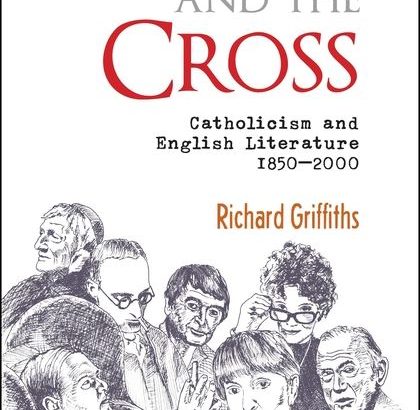The Pen and the Cross: Catholicism and English Literature 1850-2000
By Richard Griffiths (Continuum, €33 / £25)
Eamon Maher
Richard Griffiths has probably been best-known up until now for his defining study The Reactionary Revolution: The Catholic Revival in French Literature, 1870-1914 (Constable, 1966).
His latest publication deals with English literature’s close relationship with Catholicism in the period 1850-2000. It is an ambitious undertaking, but one that is clearly relished by the Professor Emeritus of French at King’s College London.
A significant proportion of the English Catholic writers were converts from Anglicanism who were attracted by the aesthetically pleasing liturgical ceremonies and the dogmatic certainties they found in the Church of Rome.
They were also acutely aware of being in a minority, albeit a generally well-heeled minority, in their native country — a ghetto mentality can often engender increased religious fervour, which in turn can translate into powerful writing.
In his introduction, Griffiths attempts to grapple with the hairy chestnut that is ‘Catholic literature’. What is it exactly? Does one have to be Catholic to produce such literature? Where is the line between a writer’s faith on the one hand and their art on the other?
In my view a Catholic literary artist should be free to explore areas of Catholic interest without offering moral judgements. Good writing can never descend into hagiography or edification; it must never be didactic or impose a certain view of the world on its readers.
In other words, Catholic literature should be subject to the normal standards we apply to any poem, short story or novel.
Most authors dealt with in this book would not be comfortable with the tag of ‘Catholic writer’ and would prefer to describe themselves as ‘writers who also happen to be Catholic’.
Griffiths quotes Archbishop Rowan Williams who came up with a very useful definition of the traditional Catholic novel, which in Britain culminated in the novels of such luminaries as Evelyn Waugh and Graham Greene.
Williams’ view is that the Catholic writers’ private religious beliefs do not matter as much as the fact that ”their fiction could not be understood by a reader who had no knowledge at all of Catholicism and the particular obligations it entailed for its adherents”.
Certainly, this definition is appropriate for Waugh’s Brideshead Revisited or the vast bulk of Greene’s work. It would indeed be difficult to fully comprehend Scobie’s dilemma in The Heart of the Matter when he receives communion in a state of mortal sin, or the decision by the whiskey priest to return to Mexico to minister to a bandit at the end of The Power and the Glory in the full knowledge that he will be arrested in the agents of a tyrannical sate, without some knowledge and appreciation of Catholic dogma.
But the success of novels like these lies in how the flawed humanity of the protagonists is conveyed and the sentiment evoked that these men could possibly be saints. The deathbed conversion of Lord Marchmain at the end of Brideshead Revisited is less successful, according to Griffiths, because ”Waugh clearly has an axe to grind”.
Waugh certainly forces the issue somewhat in stating unambiguously his desire to describe in this novel ”the operation of grace on a group of diverse but closely connected characters”.
Unfortunately, pressure of space will not permit a more in-depth discussion of the richness of this study.
Newman and Hopkins (both very familiar to Irish readers) are discussed in some detail, but so too are the novelists Wilfrid Ward, Robert Hugh Benson (clearly a significant figure) and Maurice Baring.
G.K. Chesterton’s Father Brown stories are shown to have inspired many future novelists, especially his detective priest’s famous observation about ”an unseen hook and an invisible line” to which he had recourse in order to bring any recalcitrant criminal back ”with a twitch upon a thread”.
Hilaire Belloc is dealt with as a Catholic thinker on a par with Chesterton. The poet David Jones, novelists Muriel Spark and David Lodge are other intriguing figures to be discussed. Lodge described himself as an ”agnostic Catholic”, a phrase that conveys the doubts he harbours in relation to Catholicism. In Griffiths’ view, ”Lodge shares with many Christians a sense of an incompatibility between their beliefs and the traditional words that have always been used to clothe them”.
In conclusion, Griffiths offers as a counterargument to those who believe that the survival of the Catholic novel depended on the continuance of traditional beliefs, the examples of Greene and Lodge who ”have shown that a new, vital, more literary Catholic novel can be created on the basis of dialogue and uncertainty, which equally reflect Catholic concerns”.
This study, beautifully presented by Continuum, is one that will appeal to all those with even the slightest interest in how Catholicism is firmly rooted in some of the best English literature of the past two centuries.



